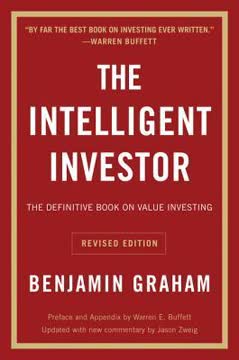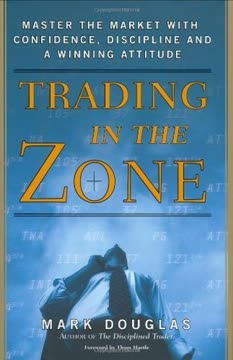Key Takeaways
1. Develop a disciplined trading approach and stick to your plan
"If you have a good money management plan, stick to it in both good and bad times."
Create a comprehensive plan. Develop a detailed trading plan that includes your trading strategy, risk management rules, and performance review process. Your plan should outline specific entry and exit criteria, position sizing rules, and risk limits. Having a concrete plan helps remove emotion from trading decisions.
Stay disciplined. The most successful traders have the discipline to consistently follow their trading rules, even during losing streaks or winning streaks. Avoid the temptation to deviate from your plan based on recent results or emotions. Review and update your plan periodically, but don't abandon it on a whim.
Treat trading as a business. Approach trading with the same seriousness and professionalism as you would any other business. Set regular "work hours" for market analysis, trade execution, and performance review. Maintain detailed records of all trades and continually look for ways to improve your process.
2. Use technical analysis and multiple time frames to improve trade timing
"By increasing your time horizon you can add a few advantages to your trading. Besides getting a clearer picture of the market, you can learn to hold on to winners longer and reduce the number of trades made."
Analyze multiple timeframes. Look at charts across different time periods to get a more comprehensive view of the market. For example, use daily charts to determine the overall trend, 60-minute charts for entry timing, and 5-minute charts for precise trade execution. This multi-timeframe approach helps avoid getting caught in short-term noise.
Key technical tools:
- Trendlines and channels
- Moving averages
- Oscillators (e.g. stochastics, RSI)
- Support and resistance levels
- Chart patterns
Confirm signals. Look for technical signals to align across multiple indicators and timeframes before entering a trade. This increases the probability of a successful trade and helps filter out false signals.
3. Trade with the trend and wait for high-probability setups
"The trend is your friend" and try to trade with it. Trading with the trend can lead to very profitable trading, because that is the path of least resistance."
Identify the trend. Use longer-term charts and moving averages to determine the primary trend direction. Once identified, focus on trading in the direction of that trend for higher probability trades.
Wait for pullbacks. Instead of chasing breakouts, wait for retracements to key support or resistance levels before entering trades in the direction of the trend. This improves your risk-to-reward ratio and increases the likelihood of a successful trade.
High-probability setups:
- Trend continuation after pullback to support/resistance
- Breakouts from consolidation patterns in trending markets
- Divergences between price and oscillators at extreme levels
4. Employ proper risk management and position sizing
"Money management is another subject that is not given enough attention in most trading books. However, it is one of the biggest reasons traders end up losers."
Set risk limits. Determine the maximum amount you're willing to risk per trade, usually 1-2% of your trading capital. Never risk more than you can afford to lose on a single trade.
Position sizing. Calculate position sizes based on your predetermined risk per trade and the distance to your stop loss. This ensures consistent risk across different trades and markets.
Key risk management principles:
- Diversify across uncorrelated markets
- Use proper stop losses on every trade
- Avoid averaging down on losing positions
- Scale into winning trades, not losing ones
- Have a plan for cutting overall risk during drawdowns
5. Avoid overtrading and emotional decision-making
"Overtrading is one of the least productive things a trader can do."
Quality over quantity. Focus on making fewer, high-quality trades rather than constantly being in the market. Wait patiently for setups that meet all your criteria instead of forcing trades out of boredom or FOMO (fear of missing out).
Emotional pitfalls:
- Revenge trading after losses
- Trading based on your P&L rather than market conditions
- Letting ego influence trading decisions
- Panic selling or buying during volatile periods
Develop emotional control. Recognize your emotional triggers and work on maintaining a calm, objective mindset while trading. Consider keeping a trading journal to track your emotional states and their impact on your decision-making.
6. Understand the importance of exits and use proper stop losses
"Money is made on the exits, not on the entries."
Plan your exit before entry. Before entering any trade, determine your profit target and stop loss levels. This helps remove emotion from the exit decision and ensures you have a positive risk-to-reward ratio.
Use technical levels for stops. Place stops at logical technical levels, such as below support in an uptrend or above resistance in a downtrend. Avoid placing stops at obvious round numbers where many other traders likely have their stops.
Exit strategies:
- Trailing stops to lock in profits
- Partial profit-taking at predetermined levels
- Time-based exits for trades not working as expected
- Exiting based on changes in market structure or sentiment
7. Continuously educate yourself and learn from your mistakes
"Everybody makes mistakes; it's part of the learning process. How a trader deals with his mistakes is the difference between a winning trader and a losing trader."
Review and analyze. Regularly review your trades to identify patterns in your successes and failures. Be honest about your mistakes and look for areas where you can improve your process.
Ongoing education. Stay up-to-date with market developments, new trading techniques, and risk management strategies. Read books, attend seminars, and learn from successful traders.
Continuous improvement:
- Backtest and forward test new strategies before real money implementation
- Keep a trading journal to track your progress and insights
- Set periodic goals for improving specific aspects of your trading
- Seek mentorship or join a community of like-minded traders for support and ideas
Last updated:
FAQ
What's High Probability Trading about?
- Focus on Success: High Probability Trading by Marcel Link is centered on understanding the mindset and behaviors of successful traders. It aims to teach readers how to make high probability trades while avoiding common pitfalls.
- Experience Matters: Link emphasizes the importance of experience in trading, suggesting that initial losses should be viewed as tuition for learning.
- Comprehensive Coverage: The book covers setting realistic goals, technical analysis, trading plans, and self-control, equipping traders with essential skills and tools.
Why should I read High Probability Trading?
- Practical Insights: The book offers practical advice based on Link's personal experiences and observations, helping readers avoid common trading mistakes.
- Mindset Focus: Link stresses the psychological aspects of trading, teaching readers to adopt the mindset of a successful trader for long-term success.
- Structured Learning: Organized into clear sections, the book guides readers through essential trading components, making it easy to understand and apply.
What are the key takeaways of High Probability Trading?
- High Probability Trading: Defined as trades with a low risk/reward ratio and positive expectancy, setting the foundation for strategies discussed.
- Trading Plan Importance: Emphasizes the necessity of having a trading plan, including strategies, risk management, and clear goals.
- Discipline and Self-Control: Highlights discipline as crucial for consistent results, with the mantra "Discipline: The Key to Success."
What is the Tuition of Trading concept in High Probability Trading?
- Learning Through Losses: Early trading years are "learning years," where losses are seen as tuition contributing to a trader's education.
- Realistic Expectations: Traders should not expect immediate profits and should be prepared for a learning curve.
- Capital Preservation: Advises treating initial capital as "learning capital," risking only a small portion while gaining experience.
How does High Probability Trading define a successful trader?
- Hard Work and Preparation: Successful traders work hard during nonmarket hours, dedicating time to preparation and analysis.
- Emotional Control: They maintain full control of their emotions and avoid overtrading, with discipline being a key attribute.
- Risk Management: Successful traders understand risk management and trade when odds are in their favor.
What are some effective money management strategies from High Probability Trading?
- Risk Percentage: Recommends risking no more than 2-5% of trading capital on any single trade to protect against significant losses.
- Position Sizing: Emphasizes calculating position sizes based on market volatility, using the average true range (ATR).
- Daily Loss Limits: Suggests setting a daily loss limit to prevent emotional trading and protect capital.
How does High Probability Trading define high probability trades?
- Defined Setup: High probability trades have a clear setup with a historically high success rate, based on technical analysis.
- Risk/Reward Ratio: These trades have a favorable risk/reward ratio, with a minimum of 2:1 or 3:1 advised.
- Market Conditions: Understanding market conditions and trends is crucial for identifying high probability trades.
What are the best strategies for trading with the trend in High Probability Trading?
- Identify the Trend: Use daily, weekly, and monthly charts to determine the trend before making trades.
- Use Trendlines and Channels: Drawing trendlines helps visualize market direction, with longer, unpenetrated lines being more reliable.
- Wait for Retracements: Enter trades after pullbacks to support areas, as these often present the best opportunities.
How can I effectively use oscillators according to High Probability Trading?
- Timing Entries and Exits: Oscillators help time entries and exits, increasing chances of successful trading.
- Look for Divergences: Divergences between price action and oscillators can signal market exhaustion.
- Avoid Overbought/Oversold Traps: Be cautious in overbought/oversold conditions, as markets can remain in these states for extended periods.
How does High Probability Trading address emotional control in trading?
- Recognizing Emotions: Discusses emotions like fear and greed, emphasizing their impact on trading decisions.
- Discipline in Trading: Advocates for sticking to trading plans and avoiding impulsive decisions driven by emotions.
- Taking Breaks: Suggests taking breaks when overwhelmed to maintain a clear mind and improve decision-making.
What are some common mistakes traders make according to High Probability Trading?
- Overtrading: Impulsive trades without proper analysis can lead to significant losses and increased costs.
- Ignoring Money Management: Neglecting principles like stop-loss orders or risking too much capital can result in devastating losses.
- Chasing Losses: Trying to recover losses by increasing risk is dangerous and often leads to further losses.
What are the best quotes from High Probability Trading and what do they mean?
- "A winning trader is one who knows how to lose.": Highlights the importance of managing losses effectively to stay in the game.
- "It's not how much you make but how little you lose that counts.": Emphasizes capital preservation over chasing profits for long-term success.
- "You can do much better by concentrating on only a few markets.": Stresses the value of focus, suggesting specialization improves decision-making.
Review Summary
High Probability Trading receives mostly positive reviews, with readers praising its comprehensive coverage of trading concepts, psychology, and risk management. Many find it valuable for beginners and intermediate traders, appreciating its practical advice and examples. Some experienced traders, however, feel it lacks depth in specific high-probability techniques. The book is lauded for its focus on discipline, systematic approaches, and avoiding common mistakes. Readers appreciate the clear organization, end-of-chapter summaries, and real-life trading examples. While some consider it basic, most agree it provides a solid foundation for aspiring traders.
Similar Books










Download PDF
Download EPUB
.epub digital book format is ideal for reading ebooks on phones, tablets, and e-readers.




